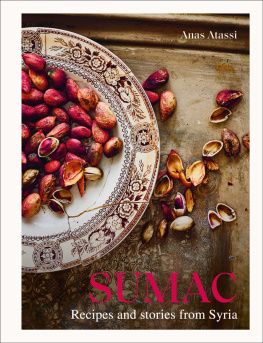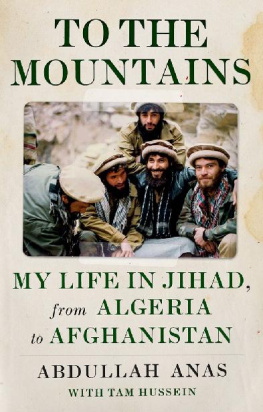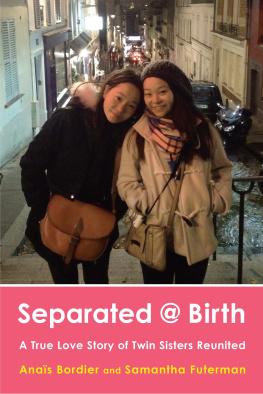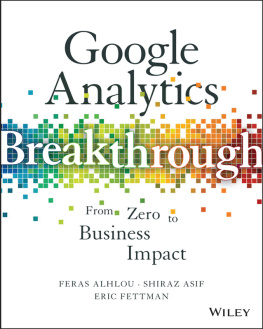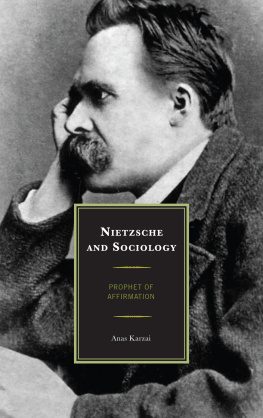Anas Atassi - Sumac
Here you can read online Anas Atassi - Sumac full text of the book (entire story) in english for free. Download pdf and epub, get meaning, cover and reviews about this ebook. genre: Home and family. Description of the work, (preface) as well as reviews are available. Best literature library LitArk.com created for fans of good reading and offers a wide selection of genres:
Romance novel
Science fiction
Adventure
Detective
Science
History
Home and family
Prose
Art
Politics
Computer
Non-fiction
Religion
Business
Children
Humor
Choose a favorite category and find really read worthwhile books. Enjoy immersion in the world of imagination, feel the emotions of the characters or learn something new for yourself, make an fascinating discovery.
- Book:Sumac
- Author:
- Genre:
- Rating:5 / 5
- Favourites:Add to favourites
- Your mark:
- 100
- 1
- 2
- 3
- 4
- 5
Sumac: summary, description and annotation
We offer to read an annotation, description, summary or preface (depends on what the author of the book "Sumac" wrote himself). If you haven't found the necessary information about the book — write in the comments, we will try to find it.
Sumac — read online for free the complete book (whole text) full work
Below is the text of the book, divided by pages. System saving the place of the last page read, allows you to conveniently read the book "Sumac" online for free, without having to search again every time where you left off. Put a bookmark, and you can go to the page where you finished reading at any time.
Font size:
Interval:
Bookmark:

This book is a delight and a celebration of everything that symbolises hope and connection. You just want to cook everything in it.
JOUDIE KALLA, AUTHOR OF PALESTINE ON A PLATE
Sumac is a deep red spice, prized in both traditional and contemporary Syrian cuisine, that adds a vibrant lift to all kinds of food. This book includes over 80 recipes inspired by writer Anas Atassis family food traditions, along with the travels, celebrations and memories of loved ones in Syria that have influenced the cuisine. It includes the wonderful Friday breakfasts hed eat in his grandmothers garden, his mothers sfeeha (flatbreads with minced beef), the falafel he now loves to make for his friends, and a rich array of other mezze, salads, meats, vegetables and desserts. Sumac is an evocative and inspiring food journey that offers a glimpse into Syrian food cultures historical roots, which through millennia of cultural traditions and neighbouring influences have been shared and shaped to perfection.





Table of Contents

Introduction
As a child I was fascinated by TV cooking shows and would spend hours watching them with my sister. It didnt matter if the chef was Italian, Asian or Middle Eastern there we were, glued to the television set. We would stage re-enactments of the shows (kitchen cupboards open for the full-size television camera) and we were presenters of our very own cooking show, even if just momentarily. And, whenever I got the chance, I would sit in the kitchen to watch my mother cook, regaling her with my made-up stories in the hopes of being allowed to stay there just a little bit longer.
But it wasnt until I left home for my university studies that my love for cooking turned to Syrian cuisine. I missed those flavours; I missed the hospitality of my parents home. So, in my attempts to stay connected to my home, my parents and my homeland, I started to prepare my favourite foods.
It turned out that my culinary daydreaming, helped along with my mothers recipes, resulted in a tangible, edible way of reminiscing. I would send my mother pictures and she would return them with comments. That is how I learned, slowly but surely, how to make Syrian dishes myself. It was the physical distance that sparked my desire to understand the foundations of the traditional food of Syria, a desire that only grew greater; I even started to find charm in the boring old that I had grown up with!
Even so, Im not a chef. The recipes I make are my mothers recipes. And her recipes are, in large part, inherited from her mother. Theyve been passed down through time; theyve been changed according to which ingredients were available in various countries and modified to fit the tastes of family and friends. They retain the heart of our family life in Syria a family life shared by the majority of Syrians before the war cast us out and over the whole world.
This is why I share the stories of my family in this cookbook. They are not only my stories. They are the stories of an entire people stories that are tied to our collective hearts, and have become all the more important because of the recent turmoil.
I was born in Homs, Syria, a city located between the countrys two largest cities of Damascus and Aleppo. My parents moved to Saudi Arabia for work and so my sisters and I grew up outside Syria for most of our lives. But, come summer, every summer, we would travel back to Homs and celebrate. I say celebrate because that is how I continue to see Syria: as a place where life is to be cherished and enjoyed.
Our summers in Syria were marked by strings of parties weddings, graduations, birthdays each one with a table laden with all sorts of delicious treats. Even our normal, everyday meals tended to include a hint of the festive. Whether it was a weekend breakfast with our grandmother, a garden barbecue or a late evening meal during Ramadan, eating well was what we shared. It is what bonded us together. With every passing summer those bonds grew tighter, and are preserved to this day, even though we live farther and farther apart from each other.
I prepare something Syrian at least once a day, even if it is as simple as a cracker with a cup of tea. And sometimes I eat Syrian food all day for breakfast, lunch and dinner. My friends dont find this hard to believe at all.
Syrian recipes, as shared throughout the world, are constantly adapting to the influences of other regions, so the recipes in this book cannot be thought of as pure and authentic. Time puts its stamp on a cuisine, and individual tastes and preferences also exert their influence. Even the most famous of dishes are subject to particular preparations in particular families. Take , for example. My mothers kibbeh hamoud is just a touch different from the kibbeh hamoud found in Aleppo, the region where it originated. She would, however, insist that we bring back as many ingredients as we could when we visited Syria, stuffing them in between the clothes in our suitcases. That was how she would fill our pantry at the house in Saudi Arabia with authentic Syrian ingredients.
Ive written my own personal preferences into some of this books recipes. In some cases I will have eaten something on my travels that then combines nicely with a certain dish or that could be worked into a recipe. My is a good example. It is originally Syrian, but with extra spices and peas added to it, inspired by way of a friends dirty rice recipe. I havent always been thanked for these twists on the traditional, but in the case of the bulgur, my mother did admit that she was impressed with the result.
Each of the recipes that follow remind me of the flavours, smells and textures of Syrian cooking, no matter whether they are authentic throughout all of Syria or whether they are particular to a single region, village or family. All of them deserve a place in this book.
There are, in my opinion, two indispensable ingredients in Syrian cooking. The first is one you cannot see or touch, though you can certainly taste it. It is called nafas. Nafas literally means breath, but in the context of cooking it means the art of cooking where ingredients combine harmoniously. Nafas is the secret behind a good , an otherwise simple cookie with a likewise simple list of ingredients. Nafas is knowing how to get the best out of the seasons harvest or how to use a perfectly ripe tomato. Nafas is the highest compliment you could possibly give to a Syrian cook. Nafas is found in the heart of the person at the stove and in the essence of a well-prepared dish. My grandmother has nafas. My mother has nafas. I hope that you, too, can find your nafas with the help of the recipes and stories contained in this book.
The second essential, and unmistakably recognisable, ingredient in Syrian cooking is sumac. Countless influences throughout the centuries have left their mark on Syrian cuisine, including the Ottoman Empire, the Persians and the French. The Silk Road brought spices to Aleppo. Modern-day Syria borders six other countries, resulting in dishes that seem Mediterranean (in Tartus), that have Turkish or Armenian flavours (in Aleppo), or that are kept simple and subtle (in Damascus). But sumac Sumac is used everywhere. This deep-red spice is, as they say in the Netherlands, the red thread that connects every dish. It is the red thread that will guide you through this book.
Font size:
Interval:
Bookmark:
Similar books «Sumac»
Look at similar books to Sumac. We have selected literature similar in name and meaning in the hope of providing readers with more options to find new, interesting, not yet read works.
Discussion, reviews of the book Sumac and just readers' own opinions. Leave your comments, write what you think about the work, its meaning or the main characters. Specify what exactly you liked and what you didn't like, and why you think so.

